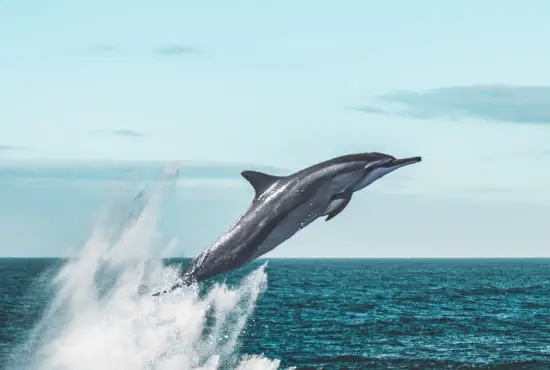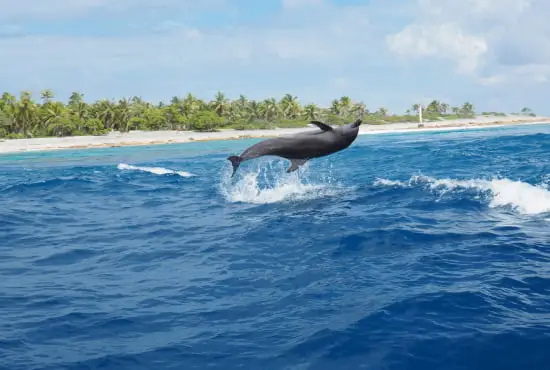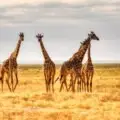Dolphins are awesome creatures.
Contrary to popular belief, dolphins are not fish (but are instead considered marine mammals). They can be found in all of the world’s oceans, typically near coastlines and also in certain rivers, such as the Amazon River. Dolphins range in size from the smaller bottle-nose dolphin to the large killer whale, but most species fall somewhere between 2 and 8 feet long and 300 to 1,500 pounds.
Overview
Dolphins have been swimming in our oceans for over 25 million years, making them one of evolution’s oldest aquatic mammals. And it’s no wonder these chattering, smiling beings manage to capture our imagination—they have an intelligence level on par with some primates and an adorable dolphin smile that’s known to melt hearts across five continents.
The incredible diversity of dolphins also makes them a favorite among divers and snorkelers looking for close encounters in places like Hawaii and Australia, where bottlenose dolphins can be found alongside manta rays, humpback whales, and sea turtles in warm-water coral reefs. But aside from being one of nature’s most diverse species, there are many other reasons why these marine mammals should be protected from extinction.

Why Are Dolphins So Smart?
Dolphins’ brains have large lobes dedicated to processing sonar signals from their environment, which means they can quickly identify objects and track their movement in three dimensions. Dolphins also have an amazing attention span, solving puzzles for hours at a time, whereas most humans would grow bored after minutes.
Scientists believe that dolphins evolved these characteristics because of their aquatic environment, where sound is much easier to use than sight as a primary mode of communication and hunting is more challenging because there’s less light underwater. When you consider all of these traits along with dolphins’ playful nature—and you factor in that some dolphin populations never seem to get old—it does make sense why so many people think dolphins are one of Earth’s most intelligent animals!
Cool Dolphin Facts
A dolphin’s brain is more than four times larger than a human’s and can be as large as 24 inches in diameter. A dolphin’s eyesight is also different from ours, enabling them to see both above and below the water simultaneously; their vision is four times better than that of humans! Dolphins have big brains, incredible eyesight, streamlined bodies, and playful nature; what else could you want? As far as whales go they are one of my favorites

How Do We Study Dolphins?
Dolphins have one of the most complex brains in existence, so it’s no surprise that scientists have wanted to study them for years. More than 30 bottlenose dolphins live in captivity today so we can study their behavior and cognitive processes. Much like humans, dolphins use echolocation to navigate their surroundings by sending out high-frequency sound waves and listening for how they bounce off of nearby objects (hence why dolphins appear to be able to see even when they’re underwater).
Scientists who want to study dolphin intelligence find that they must think outside of any single box as well; it’s not enough to just let them swim around in a tank all day or put a dolphin on a treadmill and tell it not to stop moving until you come back two hours later!
What Is Dolphin Conservation?
According to World Wildlife Fund (WWF), there are more than 40 species of dolphins and they can be found in all oceans of our planet, even in rivers and lakes with coastal areas. Marine mammals belong to a group of cetaceans which includes whales, porpoises, and extinct sea cows.

Are Dolphins Endangered?
Dolphins play an important role in many ecosystems and, as such, are at risk of extinction like any other animal. There are conservation organizations such as World Wildlife Fund (WWF) working tirelessly to ensure that dolphins can live alongside us without our presence being too harmful to them or vice versa. The WWF has also launched a list of recommendations that can help save dolphins from extinction by protecting them from hunters and pollution. There is hope for dolphin survival but we have to act fast and do our part!
What Do We Eat in the Sea?
Marine mammals (that is, whales, dolphins, and porpoises) need to eat constantly and therefore have developed an impressive range of dietary habits. For example, manatees mainly graze on seagrass; penguins consume only krill; and some species of dolphins feed primarily on fish, squid, or octopus. But even within a particular animal’s diet, there can be variety: Some narwhals feed mainly on shrimp-like crustaceans called amphipods that live in dense arctic pack ice—an ecosystem not unlike being trapped in a refrigerator for most marine mammals!


Your point of view caught my eye and was very interesting. Thanks. I have a question for you. https://accounts.binance.com/zh-TC/register?ref=RQUR4BEO
Thank you very much for sharing, I learned a lot from your article. Very cool. Thanks. nimabi